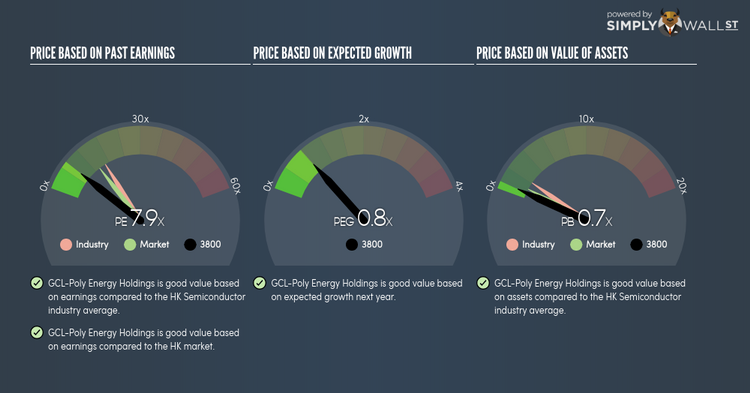Should You Be Tempted To Buy GCL-Poly Energy Holdings Limited (HKG:3800) Because Of Its PE Ratio?

GCL-Poly Energy Holdings Limited (SEHK:3800) is trading with a trailing P/E of 7.9x, which is lower than the industry average of 16.3x. While 3800 might seem like an attractive stock to buy, it is important to understand the assumptions behind the P/E ratio before you make any investment decisions. In this article, I will break down what the P/E ratio is, how to interpret it and what to watch out for. View our latest analysis for GCL-Poly Energy Holdings
Breaking down the P/E ratio
P/E is often used for relative valuation since earnings power is a chief driver of investment value. It compares a stock’s price per share to the stock’s earnings per share. A more intuitive way of understanding the P/E ratio is to think of it as how much investors are paying for each dollar of the company’s earnings.
P/E Calculation for 3800
Price-Earnings Ratio = Price per share ÷ Earnings per share
3800 Price-Earnings Ratio = CN¥0.82 ÷ CN¥0.104 = 7.9x
The P/E ratio isn’t a metric you view in isolation and only becomes useful when you compare it against other similar companies. Our goal is to compare the stock’s P/E ratio to the average of companies that have similar attributes to 3800, such as company lifetime and products sold. A common peer group is companies that exist in the same industry, which is what I use. Since 3800’s P/E of 7.9x is lower than its industry peers (16.3x), it means that investors are paying less than they should for each dollar of 3800’s earnings. Therefore, according to this analysis, 3800 is an under-priced stock.
Assumptions to be aware of
While our conclusion might prompt you to buy 3800 immediately, there are two important assumptions you should be aware of. Firstly, our peer group contains companies that are similar to 3800. If this isn’t the case, the difference in P/E could be due to other factors. For example, if you are comparing lower risk firms with 3800, then its P/E would naturally be lower than its peers, as investors would value those with lower risk at a higher price. The second assumption that must hold true is that the stocks we are comparing 3800 to are fairly valued by the market. If this is violated, 3800’s P/E may be lower than its peers as they are actually overvalued by investors.
To help readers see pass the short term volatility of the financial market, we aim to bring you a long-term focused research analysis purely driven by fundamental data. Note that our analysis does not factor in the latest price sensitive company announcements.
The author is an independent contributor and at the time of publication had no position in the stocks mentioned.

